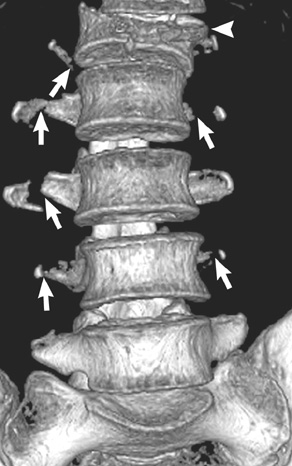J Korean Med Sci.
2011 Mar;26(3):438-443. 10.3346/jkms.2011.26.3.438.
Earthquake-related Crush Injury versus Non-Earthquake Injury in Abdominal Trauma Patients on Emergency Multidetector Computed Tomography: A Comparative Study
- Affiliations
-
- 1Sichuan Key Laboratory of Medical Imaging, and Department of Radiology, Affiliated Hospital of North Sichuan Medical College, Nanchong, Sichuan, China.
- 2Department of Radiology, West China Hospital of Sichuan University, Chengdu, Sichuan, China. yangzg1117@yahoo.com.cn
- 3State Key Laboratory of Biotherapy, West China Hospital of Sichuan University, Chengdu, Sichuan, China.
- KMID: 2157884
- DOI: http://doi.org/10.3346/jkms.2011.26.3.438
Abstract
- The aim of this study was to investigate features of abdominal earthquake-related crush traumas in comparison with non-earthquake injury. A cross sectional survey was conducted with 51 survivors with abdominal crush injury in the 2008 Sichuan earthquake, and 41 with abdominal non-earthquake injury, undergoing non-enhanced computed tomography (CT) scans, serving as earthquake trauma and control group, respectively. Data were analyzed between groups focusing on CT appearance. We found that injury of abdominal-wall soft tissue and fractures of lumbar vertebrae were more common in earthquake trauma group than in control group (28 vs 13 victims, and 24 vs 9, respectively; all P < 0.05); and fractures were predominantly in transverse process of 1-2 vertebrae among L1-3 vertebrae. Retroperitoneal injury in the kidney occurred more frequently in earthquake trauma group than in control group (29 vs 14 victims, P < 0.05). Abdominal injury in combination with thoracic and pelvic injury occurred more frequently in earthquake trauma group than in control group (43 vs 29 victims, P < 0.05). In conclusion, abdominal earthquake-related crush injury might be characteristic of high incidence in injury of abdominal-wall soft tissue, fractures of lumbar vertebrae in transverse process of 1-2 vertebrae among L1-3 vertebrae, retroperitoneal injury in the kidney, and in combination with injury in the thorax and pelvis.
MeSH Terms
Figure
Reference
-
1. Mahoney LE, Reutershan TP. Catastrophic disasters and the design of disaster medical care systems. Ann Emerg Med. 1987. 16:1085–1091.2. Chen TW, Yang ZG, Wang QL, Dong ZH, Yu JQ, Zhuang ZP, Hou CL, Li ZL. Crush extremity fractures associated with the 2008 Sichuan earthquake: anatomic sites, numbers and statuses evaluated with digital radiography and multidetector computed tomography. Skeletal Radiol. 2009. 38:1089–1097.3. Sever MS, Erek E, Vanholder R, Akoglu E, Yavuz M, Ergin H, Turkmen F, Korular D, Yenicesu M, Erbilgin D, Hoeben H, Lameire N. Clinical findings in the renal victims of a catastrophic disaster: the Marmara earthquake. Nephrol Dial Transplant. 2002. 17:1942–1949.4. Ersoy A, Yavuz M, Usta M, Ercan I, Aslanhan I, Güllülü M, Kurt E, Emir G, Dilek K, Yurtkuran M. Survival analysis of the factors affecting in mortality in injured patients requiring dialysis due to acute renal failure during the Marmara earthquake: survivors vs non-survivors. Clin Nephrol. 2003. 59:334–340.5. Erek E, Sever MS, Serdengeçti K, Vanholder R, Akoğlu E, Yavuz M, Ergin H, Tekçe M, Duman N, Lameire N. Turkish Study Group of Disaster. An overview of morbidity and mortality in patients with acute renal failure due to crush syndrome: the Marmara earthquake experience. Nephrol Dial Transplant. 2002. 17:33–40.6. Oda J, Tanaka H, Yoshioka T, Iwai A, Yamamura H, Ishikawa K, Matsuoka T, Kuwagata Y, Hiraide A, Shimazu T, Sugimoto H. Analysis of 372 patients with crush syndrome caused by the Hanshin-Awaji earthquake. J Trauma. 1997. 42:470–476.7. Becker CD, Mentha G, Terrier F. Blunt abdominal trauma in adults: role of CT in the diagnosis and management of visceral injuries. Part 1: liver and spleen. Eur Radiol. 1998. 8:553–562.8. Mirvis SE, Shanmuganathan K. Trauma radiology: part I. Computerized tomographic imaging of abdominal trauma. J Intensive Care Med. 1994. 9:151–163.9. Dong ZH, Yang ZG, Chen TW, Feng YC, Wang QL, Chu ZG. Spinal injuries in the Sichuan earthquake. N Engl J Med. 2009. 361:636–637.10. Dong ZH, Yang ZG, Chen TW, Feng YC, Chu ZG, Yu JQ, Bai HL, Wang QL. Crush thoracic trauma in the massive Sichuan earthquake: evaluation with multidetector CT of 215 cases. Radiology. 2010. 254:285–291.11. Chen TW, Yang ZG, Dong ZH, Wang QL, Yao J, Deng W, Zhuang H. Crush pelvic injury in the Sichuan earthquake evaluated by multidetector CT scanning. Emerg Med J. 2010. 27:868–869.12. Mulvey JM, Awan SU, Qadri AA, Maqsood MA. Profile of injuries arising from the 2005 Kashmir earthquake: the first 72 h. Injury. 2008. 39:554–560.13. Schmelzer TM, Mostafa G, Gunter OL Jr, Norton HJ, Sing RF. Evaluation of selective treatment of penetrating abdominal trauma. J Surg Educ. 2008. 65:340–345.14. Isenhour JL, Marx J. Advances in abdominal trauma. Emerg Med Clin North Am. 2007. 25:713–733.15. Deunk J, Brink M, Dekker HM, Kool DR, Blickman JG, van Vugt AB, Edwards MJ. Routine versus selective multidetector-row computed tomography (MDCT) in blunt trauma patients: level of agreement on the influence of additional findings on management. J Trauma. 2009. 67:1080–1086.
- Full Text Links
- Actions
-
Cited
- CITED
-
- Close
- Share
- Similar articles
-
- Subacute-Stage Organized Medical Support Services in a Disaster Area: Anaysis of medical support in the '99 Taiwan earthquake
- Experience of a Medical Disaster Assistance Team during the Subacute Period after the Haiti Earthquake
- Prolonged Unmet Mental Health Needs of the 2017 Pohang Earthquake Survivors
- Risk stratification of intermediate-risk children with minor head injury: a secondary publication translated into Korean
- Traumatic Abdominal Wall Hernia: A Case Report



